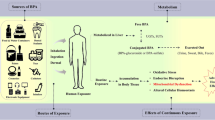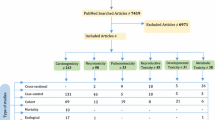Abstract
Effect of repeated oral administration of hexachlorocyclohexane (HCH; 10 and 20 mg/kg body weight per day for 7, 15 and 30 days) on antioxidant defence system and lipid peroxidation (LPX) in the testis was compared between immature (15-day-old) and mature (90-day-old) rats. In both age-groups of rats, the pesticide elicited a significant decrease in the activities of cytosolic superoxide dismutase (SOD; total and CN−-resistant) and catalase, and ascorbic acid content together with an increase in the levels of LPX (both in crude homogenate and subcellular fractions) and H2O2. Testicular glutathione peroxidase (GPx; total and non-selenium-dependent) activity was enhanced in both the age-groups of rats while the testicular glutathione content as well as glutathione reductase activity remained unaltered. HCH treatment resulted in a decrease of total epididymal sperm number with a higher incidence of dead and damaged spermatozoa, and sperms having anomalous head. Statistical analyses suggest that the alterations in the testicular antioxidant defence profile in the rat are not only dependent on the duration of pesticide treatment, but also influenced by age.
Similar content being viewed by others
Author information
Authors and Affiliations
Additional information
Received: 23 July 1998 / Accepted: 11 January 1999
Rights and permissions
About this article
Cite this article
Samanta, L., Sahoo, A. & Chainy, G. Age-related changes in rat testicular oxidative stress parameters by hexachlorocyclohexane. Arch Toxicol 73, 96–107 (1999). https://doi.org/10.1007/s002040050593
Issue Date:
DOI: https://doi.org/10.1007/s002040050593




